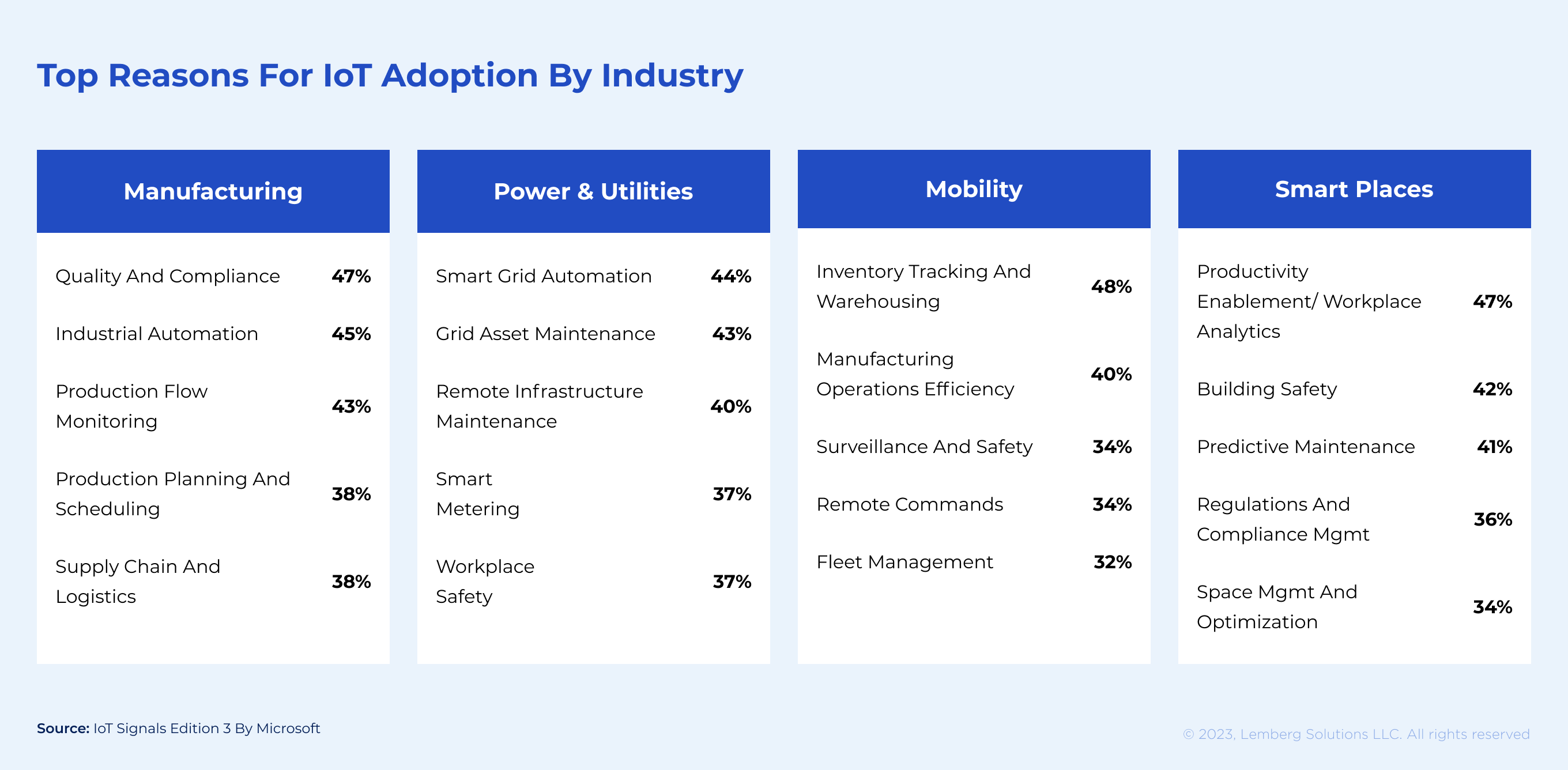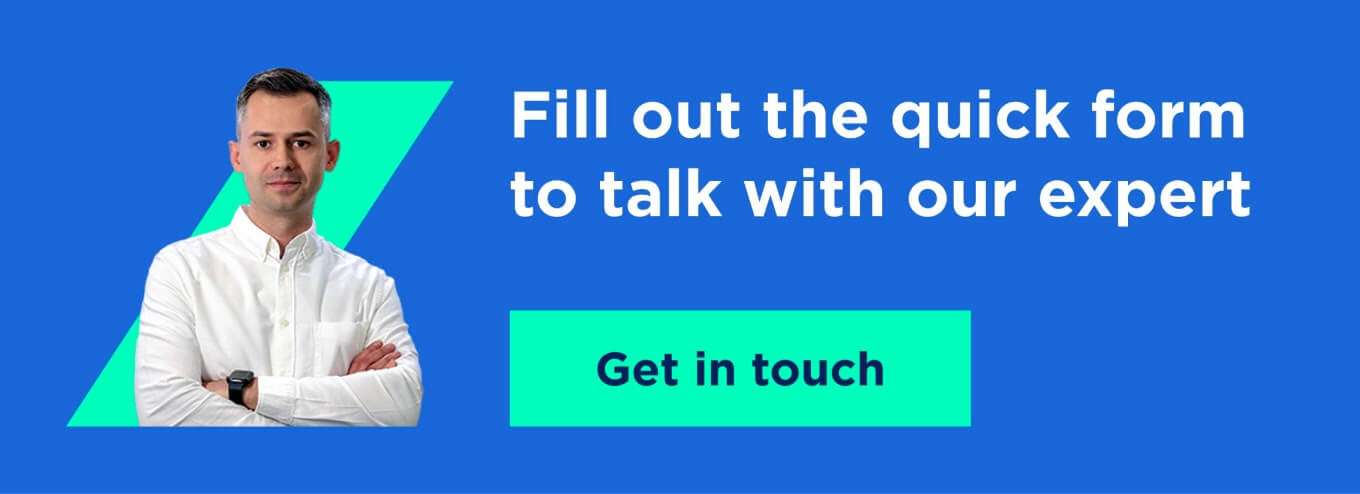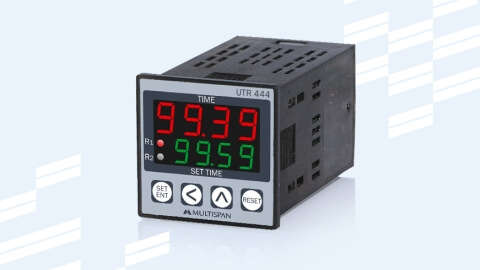The number of connected IoT devices approaches 15.14 billion worldwide. By 2023, it will reach 29.1 billion, which means every person will interact with multiple smart devices daily. It also means people readily buy IoT solutions for personal and other uses.
Most of these gadgets rely on cloud computing technologies to store and process data. The use of cloud computing in the Internet of Things enables manufacturers to produce anything from speakers to sophisticated Agritech equipment.
Lemberg Solutions have completed multiple IoT projects and would like to share our expertise in this article. Discover the relation between IoT and cloud computing, why to invest in such a product, and more below.

What is IoT and cloud computing?
Even though technically, IoT can use cloud-agnostic connections like Wi-Fi, LPWAN, or even Bluetooth, it would considerably limit the functionality of devices. Therefore, large-scale IoT mainly relies on the cloud. Let's clarify what both concepts mean:
- IoT (or the Internet of Things) is a network of physical devices that gather and exchange data via the Internet with the help of protocols. They have firmware and software components. While the firmware with sensors captures data, the software processes it to complete the required action (e.g., generate a report with analytics, turn off the light, etc.).
- Cloud computing is on-demand network access to shared computer system resources (e.g., networks, storage, servers, apps) with minimal management or interaction. Cloud computing enables you to use the Internet for processing power and storage.
IoT vs. cloud computing difference
The Internet of Things and cloud computing complement each other since most smart devices need cloud computing capabilities to operate. Still, these are different concepts with distinctive uses. Here's a concise table comparing them:
| IoT | Cloud computing | |
|---|---|---|
| Definition | Network of connected devices capable of exchanging data | Used for on-demand access to computing resources and apps |
| Purpose | Build an ecosystem of connected devices for consumer or industrial use | Enable the use of data generated by an IoT device |
| Big data | Source of big data | Means of big data management |
| Interdependence | IoT devices require cloud computing technologies to operate | Cloud computing has multiple uses besides IoT development |
Why you should invest in cloud computing IoT
The growth of IoT spending shows an 8.2% CAGR, reaching a trillion annually for a reason. While consumers adore smart gadgets for everyday use, enterprises implement them to work more efficiently and reap other business benefits.

The Internet of Things in cloud computing solutions enables remote control over operations, optimizes manufacturing processes, reduces expenses, and more.
Tech companies admit the definitive role of cloud computing and big data in IoT. By powering IoT devices with cloud computing capabilities, they create secure software for smart gadgets that can easily handle loads of data.
Here are the main IoT cloud computing benefits for adopters and developers:
Cloud IoT benefits for businesses
- Remote control over business and manufacturing operations with device-to-cloud communication in IoT
- Business process optimization through smart devices and automation
- Easier regulatory compliance with user role management
- Business continuity due to cloud-based data backup capabilities
- Analytics capabilities based on vast data massives automatically collected and processed
- Mobile data access to make employees more productive and flexible
Cloud IoT benefits for tech companies
- Data security based on ultimate automation and the use of secure public clouds
- Unlimited storage capacity to process and accumulate big data without limitations
- Faster time to market due to quick cloud deployment
- Ability to connect multiple devices through cloud computing services
- Scalability of the cloud, which is vital when the customer's business rapidly grows
Challenges of implementing cloud computing in IoT
Despite IoT-based operations continuing to penetrate different fields, 29% of the surveyed companies still feel the risk isn't worth it. So far, the main obstacle for 30% of those who hesitate is an ongoing implementation of other solutions. 29% of respondents worry about security and want to work out existing challenges before increasing IoT use. Many companies believe IoT is too complex to implement because of technology demands and the business transformation needed.

Based on Lemberg Solutions' experience, there are some other challenges to IoT adoption besides those listed. They are mostly related to cloud computing. In particular, our tech experts name migration a problematic aspect of IoT cloud computing. Most potential IoT-based businesses that consider moving to the cloud don't realize the scope of work required to complete the migration. Sometimes migration can even turn into rearchitecting. It may be an unpleasant surprise you can only avoid through profound project discovery.
Cloud computing and IoT use cases [real examples]
Cloud computing Internet of Things is everywhere, be it a system that tracks the temperature in your house or an autonomous vehicle. We have used cloud computing capabilities to complete multiple projects. Here are just a few of them.
Telemedicine platform for cough recognition
Our team developed an SBC-based IoT gateway device that monitors patients' coughs by recording only medical-useful data. We used scalable micro-services for cloud architecture design, along with Microsoft Azure for the back end. The cloud capabilities allowed us to create a telemedicine device that provides doctors with relevant patient health data and enables remote health monitoring.
Cell garden
Cell garden is another Lemberg Solutions' project combining AWS cloud computing and IoT. The client hired us to develop an MVP of a hydroponic system for growing microgreens at home. It had to include autonomous watering, light, and remote control. Our team contributed to electrical, mechanical, firmware, and web/cloud development to cover different aspects of the project. The result was a 3D-printed and fully assembled device prototype that helped the startup to pitch the idea to investors.
Visit our portfolio for detailed information on case studies.
Tech stack for cloud computing in IoT
Starting a cloud IoT project, you must find specialists in both IoT and cloud computing-related technologies. The final tech stack will depend on the software and firmware type. Below are the most commonly used technologies to consider.

Team composition for a cloud computing in IoT project
Cloud computing IoT projects require complex expertise in multiple fields. Therefore, you will need a dedicated development team consisting of the following experts:
- DevOps
- Cloud engineers
- Firmware engineers
- Mobile Android and iOS engineers (for projects with mobile apps)
- Web frontend engineer
- Project manager
- Business analyst (for the discovery phase)
- Manual or automation QA
- Data science and ML engineers (for AI-based IoT solutions)
If you don't have the necessary engineers on site and finding them is cumbersome or expensive, you can outsource. A third-party company will assemble a whole team for you or provide the missing specialists.
How Lemberg Solutions can help you with cloud computing and IoT development
Lemberg Solutions is a software development company with cloud computing and IoT proficiency. We cover the full spectrum of Internet of Things development services, including software and firmware. Ask us to do a project audit for you to start off the right foot. Hire our specialists for architecture design, cloud optimizing, development, testing, and other SDLC processes.
FAQs
Which type of cloud is best suited for IoT application development?
Speaking of cloud computing and the Internet of Things, we usually mean public cloud. Only public clouds like AWS, Google Cloud, or Azure ensure the necessary infrastructure, reliability, and scalability. Using cloud services like a private or hybrid cloud would require a separate DevOps team and from-scratch cloud engineering. It's too time-consuming and doesn't pay off for most companies.
How long does cloud IoT development take?
The duration directly depends on the complexity of the developed system. The most basic project will take from 3 months and up. The development may last much longer if you want to build a cloud IoT solution with machine learning and AI capabilities.
What developers do I need for a cloud computing IoT project?
You should hire DevOps, cloud engineers, firmware developers, manual or automation QAs, and data science and ML engineers for the cloud IoT part. Besides, you may need mobile Android/iOS engineers and web frontend engineers to design apps for end-users.



